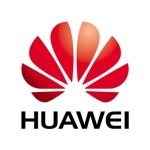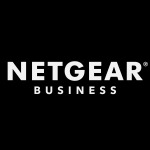What is our primary use case?
In our warehouse, we use a wireless solution for every job we have there. For example, we have dispatch trucks or picking. They call it picking when you choose the products and go to the warehouse site of our clients. All of that operation is wireless.
They use a Vocollect solution for warehouse sites. If we don't have wireless, they don't have Vocollect and without it, they don't know how to offer dispatch for the trucks.
For plants, we have solutions for tablets. The tablets manage all of our equipment, our principal machines. That's why we need the wireless option that Cisco provides.
We use the solution for connectivity for our employees.
What is most valuable?
The deep knowledge of Cisco is its most valuable aspect. The Wireless Cisco solution has been in development for many years. That gives users trust in the solution.
There are many engineers that know how to operate Cisco. If I choose another vendor or another solution, I have to be very careful about how much knowledge is actually there in the market. For example, if I have a problem, how easy is it to find someone, an expert, in order to do a solution for a problem? That's why we choose Cisco. There's deep knowledge there that doesn't exist elsewhere. Also, Cisco has commercial representatives in our country, in our city. It's easy to communicate with Cisco directly. With others, it's not that easy.
The integration is great. For all Cisco environments, the integration is easy. W have a lot of Cisco products. The integration between them all is simple. That's why the other company we work for or we as a team choose Cisco as a vendor.
The initial setup is easy.
We've found the solution to be scalable.
What needs improvement?
The price needs improvement. The bad thing about Cisco is about price. Nowadays it's all about delays in equipment as well. Any hardware is delayed.
There's a delay in equipment that comes to Columbia, to our country, and that lasts almost six months. I have a project in which we have to wait for six months, seven months in order to get the equipment. That is the bad aspect nowadays.
For how long have I used the solution?
The company I work for has been using Cisco for 20 to 25 years.
What do I think about the scalability of the solution?
My company has so many brands and so many plants and factories. We are a multi-Latina company. We have brands in Chile, Argentina, Ecuador, Colombia, Dominican Republic, et cetera. Our inventory of Cisco equipment is almost 300 to 500 devices. There are many series there. The new branch has 91 or 92 Wireless, however, they also have old series such as the 12,000 series. It's old, too old, however, this year we are planning to fix that.
It's so scalable. For example, if I update the series, I don't have to change all my environment. I only have to change the parts that I need.
We have 5,000 employees on the product. All of them use wireless. For example, we use wireless for daily operations of the factory.
We do plan to increase usage. This year we are planning to open a new warehouse. They are going to need a Cisco solution. Even at this moment, we have the design, or we are checking the design. We maybe will buy the solution in next month or two. That is the roadmap.
How are customer service and support?
Technical support is very helpful. It's easy to reach them. We are satisfied with the level of service.
Which solution did I use previously and why did I switch?
We just have Cisco solutions. We don't have any other vendors in our network.
How was the initial setup?
The initial setup is simple.
The knowledge is easy to locate. You need to click or look for a special website. You have so much information on the cloud and so much information, documents, et cetera. That's why developing a project with Cisco is easy.
If I have a big project it could take maybe four to five months, however, that's for a big project.
For deployment, maybe for a big project, we have ten people. For the operations, for support solutions, my team is comprised of five people. That's five engineers that make up my personal team.
What about the implementation team?
I contract a partner to help with implementation. If I have a big project, I contract the design.
As the first step, we contract the design. For the design, sometimes Cisco gives us the special engineers. However, in other cases, we contract the design. That design comes with a WiFi heat design. They have visual material.
The other step is to contract the solution with a partner. We send to the market an RFP, a request in order to have the best price in the market and the best partner in the market. The other step is to implement or to develop the project.
What's my experience with pricing, setup cost, and licensing?
The licensing is expensive. The cost of licenses is expensive, as are other solutions. When we have a project, we have to clarify to our financial staff why we chose Cisco, as there are other, cheaper solutions. The cost of equipment is expensive.
For example, for new brand equipment, Cisco Wireless equipment, it costs $1,500 for one piece of equipment. That includes licenses, installation, and equipment.
Which other solutions did I evaluate?
We looked at Meraki, however, we decided our organization was a bit too large for that particular solution. We prefer to have on-premises options.
I also test other solutions, for example, Aruba or Ubiquiti.
What other advice do I have?
I am an end-user. I work for a manufacturing company. I manage the networking solution for that company.
At this moment, we are choosing Cisco as a continuous technology. Nowadays just we have our roadmap. Our plan for the next two months is to open a new branch office, and no more.
I'd rate this solution at a ten out of ten.
Which deployment model are you using for this solution?
On-premises
Disclosure: My company does not have a business relationship with this vendor other than being a customer.


















